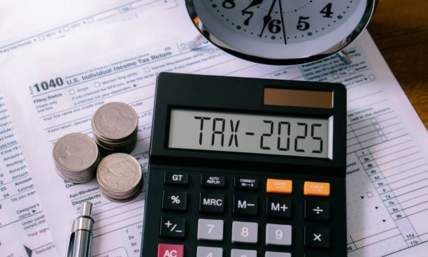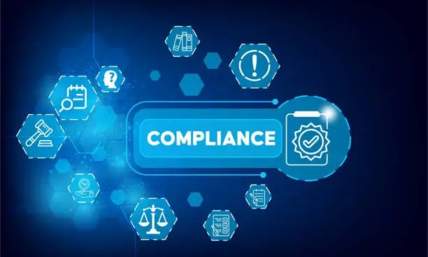A Full Breakdown of W2 And 1099 Filing Specifications
Employers are mandated to file tax forms for their employees. In most circumstances, they're supposed to fill in W-2 and 1099 forms.
Since tax laws are complicated, businesses often get confused over which form to fill in and file. While your business may be able to correct minor errors after filing W-2 and 1099 forms, significant mistakes may cost your organization, literally and figuratively speaking. If you don't correctly fill these forms or use the wrong tax statement, you may run into issues with the Internal Revenue Services (IRS).
To help ease the confusion, here's a discussion about W-2 and the amended 1099 forms, as well as some filing specifications for these statements.
Essential information about W-2 and 1099
Before proceeding to the filling instructions, your organization has to have a clearer understanding of the proper form to file for individuals who've rendered services to your company. You can start by determining which form to file in certain business transactions.

Who needs to file a W-2 Form?
Every employer who hires a full-time worker and pays in cash or any compensation amounting to at least USD$600 is obliged to file Form W-2, which is also known as Wage and Tax Statement. A W-2 tax form is also required for tax withholding organizations, whether income, Social Security, and Medicare taxes. Businesses retaining income tax deductions for an employee who hasn't claimed an exemption on Form W-4 or Employee's Withholding Allowance Certificate must also file W-2.
Do you have to file all your W-2 forms?
As an employer, you have to keep your employees' and consultants' tax forms for proper reporting to the IRS. As an employee, you should receive a copy of your W-2 from your employer. The same can be true for non-employees eligible for 1099 Form filing, such as lawyers.
If you lost your W-2 copy, you could ask your employer to furnish you with another one. Otherwise, go to the IRS website and click the Get Transcript page if you filed electronically. The IRS can also supply you with W-2 files provided that you attached your W-2 in your paper tax return. If this doesn't work and you're still unable to get your records, you may contact the Social Services Administration (SSA).

Also read: What are the Secure Electronic Delivery Methods Of W2 and 1099 Forms?
Information included in the W-2 form
Employers need the following employer and employee information ready when filling up each team member's W-2 form:
Employer/ Business Information
-
Employer's Identification Number (EIN)
-
Business name, address, and ZIP code
-
State ID number
-
State and local wages and tips
-
State and local income tax
Employee Information
-
Employee's Social Security number (SSN)
-
Employee's name and address
-
Wages, tips, and other compensation
-
Social Security wages
-
Medicare wages
-
Social Security tips
-
Dependent care benefits
-
Federal income tax withheld
-
Medicare tax withheld
-
Allocated tips

General and specific instructions for filling up the W-2 form
The IRS reminds employers to take heed of the following reminders when filling in W-2 forms:
-
The Copy A forwarded to the SSA should represent a replica of forms authorized by the IRS. Take note that sensitive machines scan paper submissions and sense even the slightest deviations. It could misread printouts from other printers.
-
Don't remove or replace decimal points and cents or add dollar signs.
-
Use only blank ink when filling in. This is because the machines can't read inks in other colors.
-
Make your handwriting legible.
-
Follow the correct formats.
-
Make sure all entries are correct.
-
Leave non-applicable boxes blank.
-
Don't cut, staple, or fold Copy A forms submitted to SSA.
-
When mailing W-2 forms, arrange them alphabetically by your staff's last names or numerically based on employees' SSNs.

After accurately filling in the form, submit online or mail Copy A to the SSA. Employers shall distribute copies of the records to the following:
-
Copy B, C, and 1 to the staff concerned
-
Copy 1 to the local tax department, as required
-
Copy D, alongside Form W-3, or Transmittal of Income and Tax Statements, shall be kept by the employer for four years.
When should an employer file Form 1099-MISC?
Form 1099-MISC is for non-full-time workers who've transacted with the organization and were paid the following fees within the applicable year:
-
USD$10 or more in royalties or broker fees in place of dividends and non-taxable interests
-
USD$600 or more in various types of payments, including:
-
Rent or lease
-
Prizes and awards
-
Other kinds of income payments
-
Cash payments from a notional principal contract to a person, partnership, or estate
-
Any income from fishing boats
-
Healthcare and medical payments
-
Crop insurance yields
-
Cash payments for fish and marine life purchases
-
Gross proceeds paid to a lawyer or to corporations providing legal services
-
Deferrals under Section 409A deferrals

From the above mentioned information, it's safe to say that W-2 is typically for full-time or regular employees. On the other hand, Form 1099-MISC leans towards non-employees, consultants, independent contractors, and third-party entities temporarily hired or their services paid for by an organization.
If you're a regular employee doing freelance work on the side, file all your W-2 and 1099-MISC fooblems down the road. It can get a bit complicated, though, so consult a tax specialist to help rms to avoid running into pryou out.
Basic information needed for 1099-MISC and 1099-NEC forms
Before filling in the form, organizations should have the following information ready to facilitate a smooth process:
-
Payer or business’s name, complete postal address, ZIP code, and phone number
-
Recipient’s TIN
-
Recipient’s name, street address and ZIP code
-
Amount paid to the recipient during the applicable tax period, as indicated in applicable boxes
The new 1099-NEC form
In 2020, the IRS revised the 1099-MISC form, and created another form called the Form 1099-NEC (Non-employees Compensation). This form is used mainly for reporting independent contractor payments.
Businesses will have to issue this for specific transactions of at least USD$600 that involve:
-
Service payments for an individual who's not an employee
-
Attorney's legal fees
-
Any individual subject to federal income tax deduction per the backup withholding rules.

Either 1099 MISC or 1099-NEC is applicable for reporting sales of over USD$5,000 worth of consumer products to an individual on buy-sell, deposit-commission, or other commission bases for resale arrangements. When filing via 1099-NEC, the taxpayer must file it with the tax agency on or before January 31 of the following year. The IRS uses the 1099-MISC and 1099-NEC forms to check whether a taxpayer has reported these payments correctly.
Are there any changes in filling in the 1099 forms?
Besides Form 1099-MISC's new name, Miscellaneous Income to Miscellaneous Information, the IRS has these reminders for both 1099-MISC and 1099-NEC filing amendments:
-
Form 1099-MISC, box 11: This box includes any reporting covered by section 6050R, which involves cash payments for the purchase of fish for resale purposes from an individual or corporation engaged in the said business.
-
Form 1099-NEC, box 1: This won't be used for reporting under section 6050R, which indicates cash payments for purchasing fish for resale purposes.
-
Form 1099-NEC, box 2 and Form 1099-MISC, box 7: Taxpayers can use either to convey any sales of over $5,000 of consumer products for resale, buy and sell, deposit-commission, or related transactions.
-
Form 1099-NEC resized: The IRS has reduced the form's height to accommodate three forms on a single page.
-
Electronic filing of returns: The Department of the Treasury and the IRS may issue orders to reduce the 250-return requirement for 2021 tax returns. This is still subject to further announcements.
When are the W-2, Forms 1099-MISC, and 1099-NEC due?
Form 1099-MISC must be done by February 28 for paper filing or March 31, if done electronically. In addition, organizations must send 1099-MISC forms to recipients by February 1 and have them filed with the IRS on or before March 1 for paper filing. Those filing forms electronically can do it via the IRS website until March 31.
Special considerations are provided to companies required to report box 8 or Substitute payments in Lieu of Dividends or Interest. They can furnish recipients with a copy by February 16. The same is true for organizations filling in 1099-MISC box 10, or Gross Proceeds Paid to An Attorney.
Meanwhile, Form 1099-NEC must be submitted before January 31, whether using online or paper filing methods, to the IRS.
W-2 forms must be received via mail or electronic filing on or before January 31 of the following year to the SSA. Employers must send out W-2 forms to their employees no later than the said date. If the W-2 form deadline falls on a non-working day, such as Saturday, Sunday, or a legal holiday, the deadline is rescheduled for the next working day.

Wrapping Up
Whether filing forms online or submitting them through the mail, employers need to understand how to fill in various tax forms and which particular document to submit. Having these files in order will allow their payroll to run smoother and ensure employees will receive the correct pay stubs.
While they may look simple, W-2 can be complicated to fill in, and most fledgling businesses require the help of software or a tax expert to fill them accurately. Form 1099 is no different, especially with the new revisions as discussed earlier.
Organizations must be aware of these developments, particularly in 1099-MISC and 1099-NEC filing, to prevent the risks of having to pay stiff penalties.















